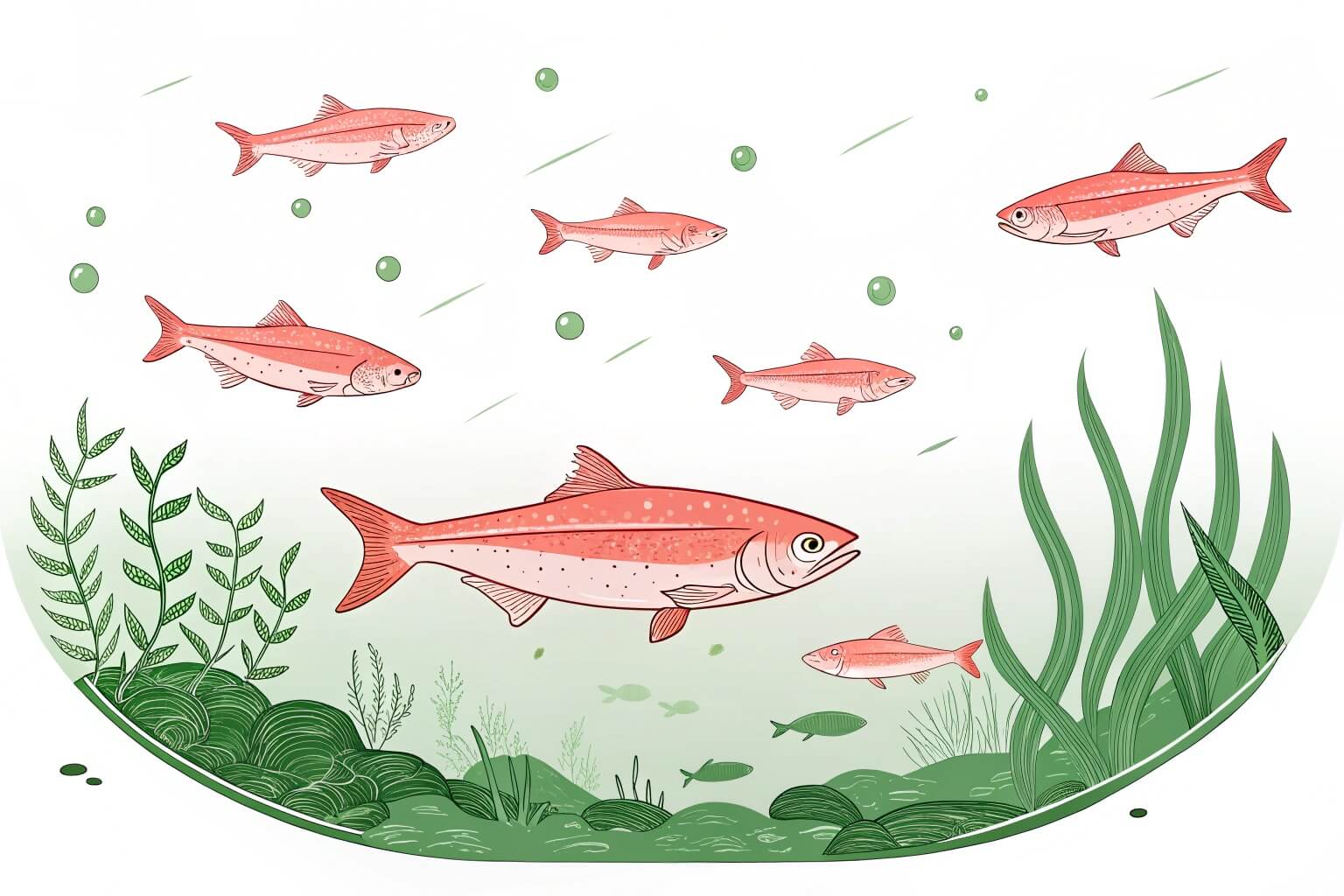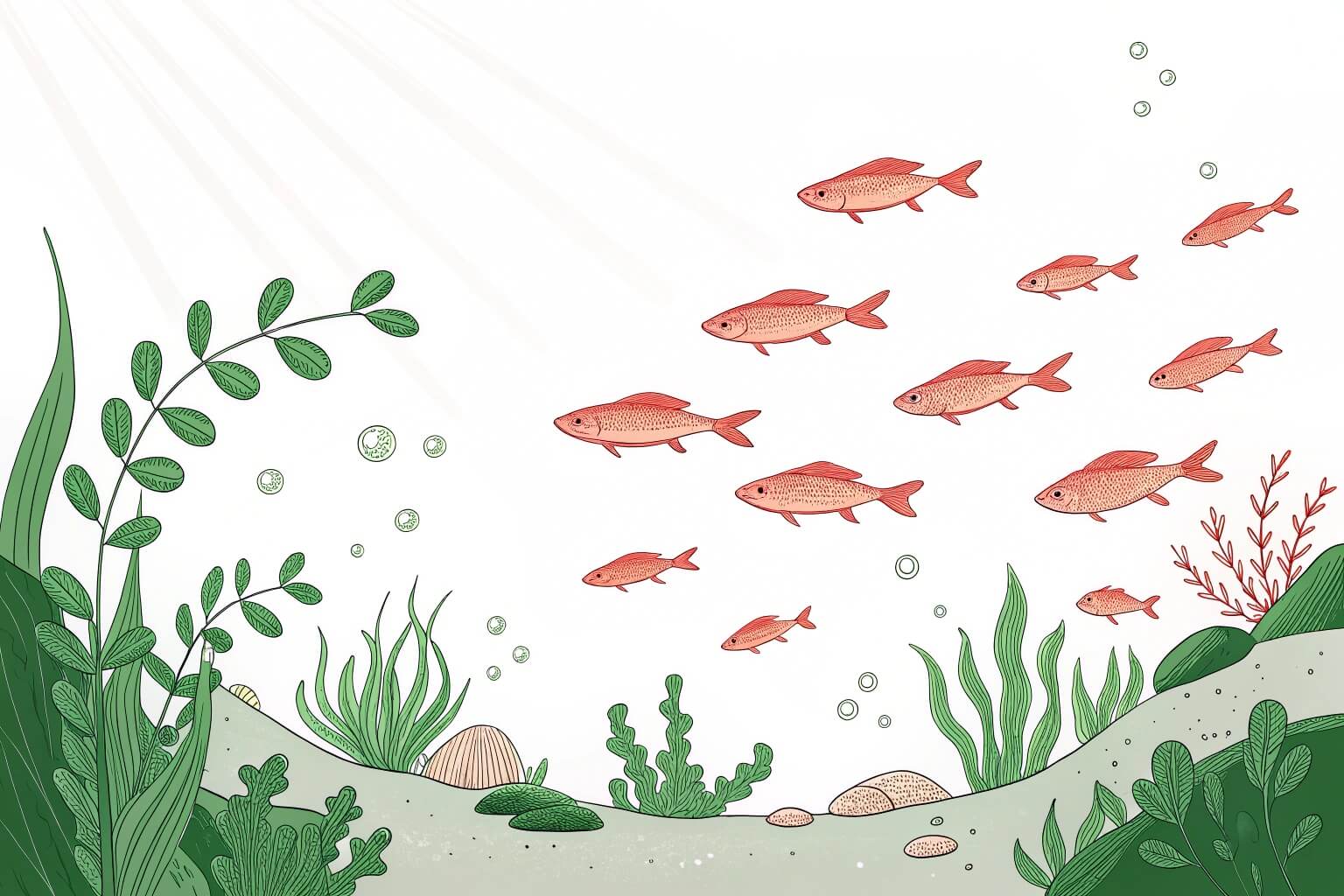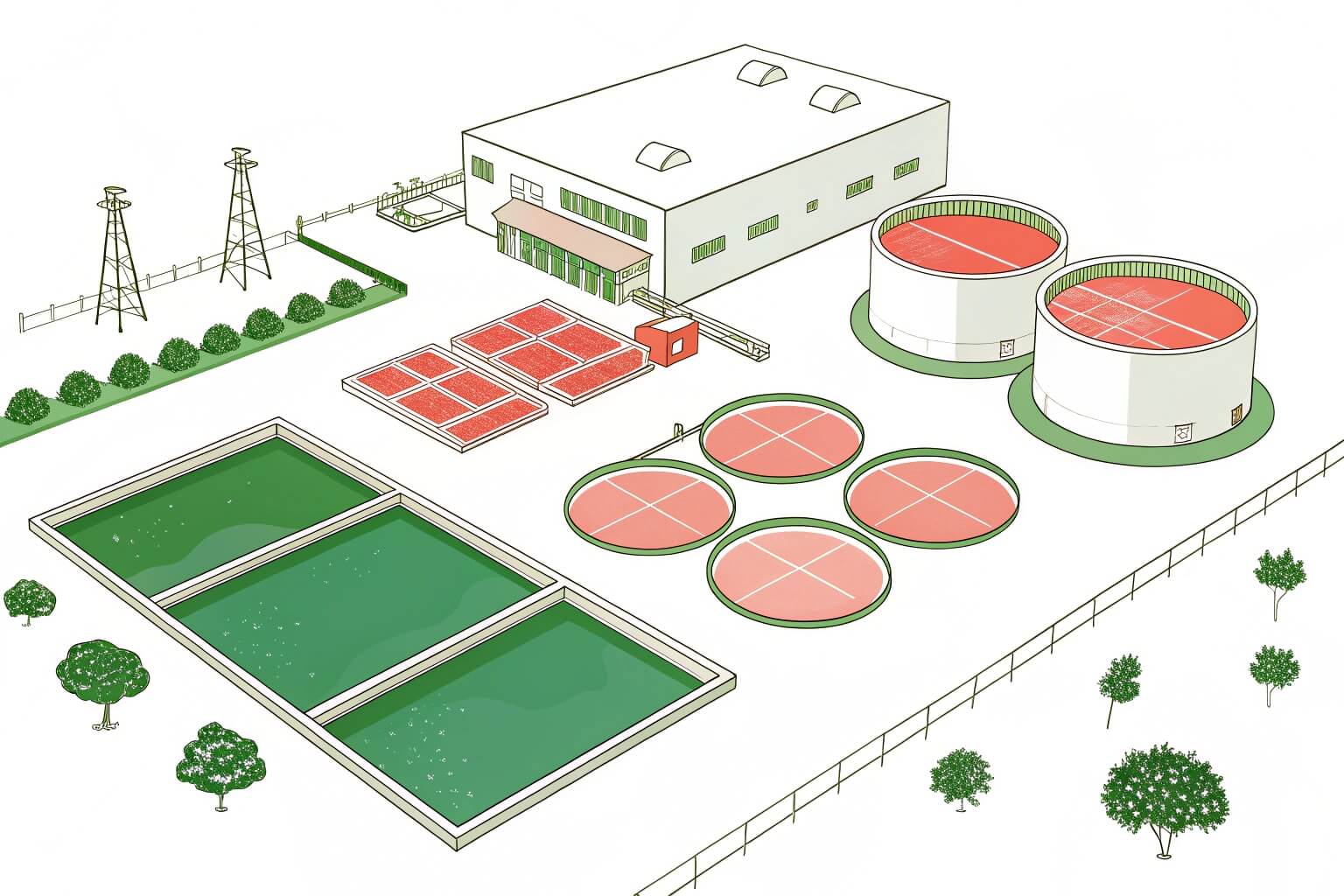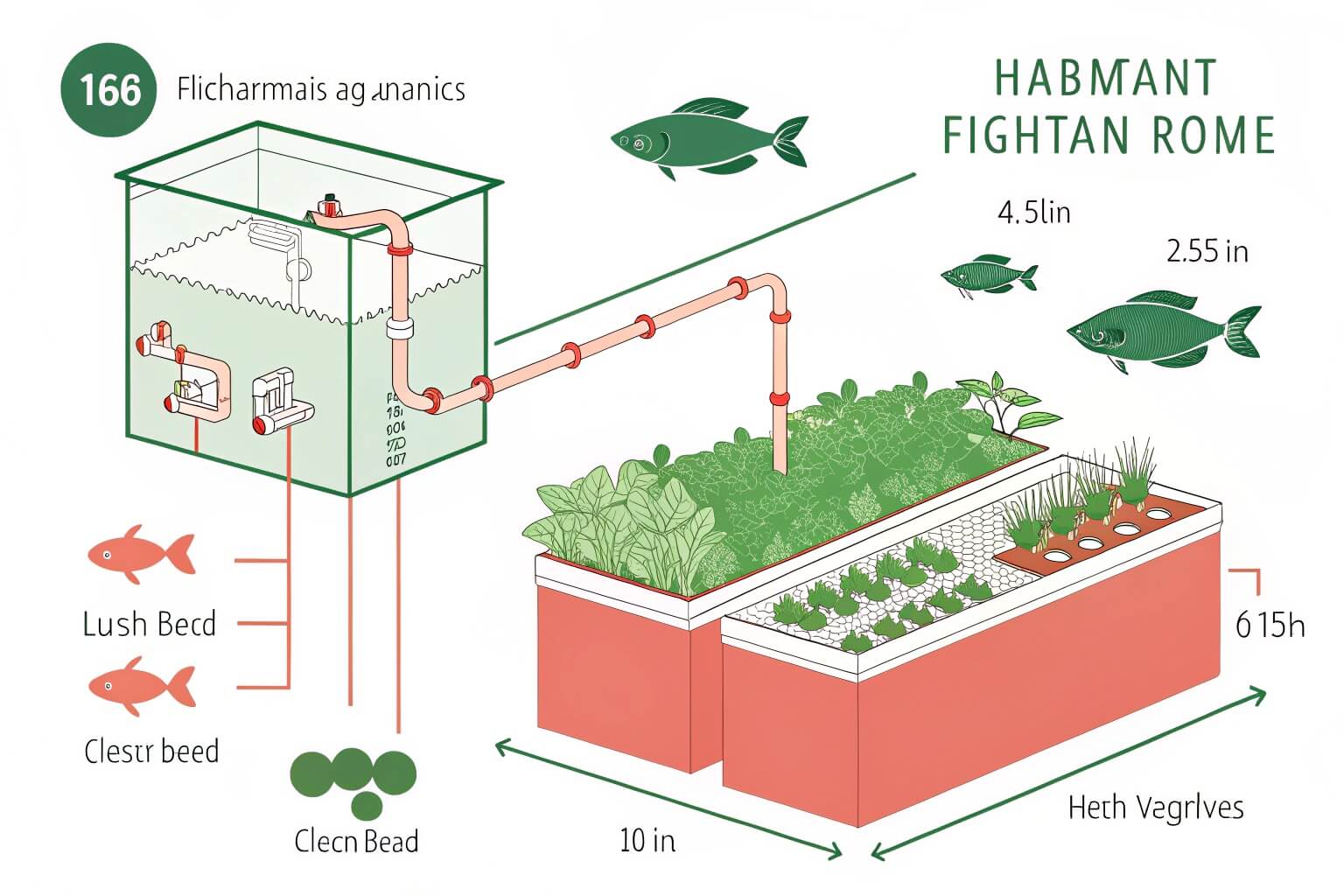How to Choose the Right Aquaculture Tank Supplier: 7 Critical Factors?
Starting or growing an aquaculture venture feels exciting, but choosing the wrong tank supplier can sink your plans fast. Poor quality tanks lead to leaks, stress, and lost fish – a costly mistake. I want to help you avoid that.
Choosing the right supplier involves checking key factors: tank durability, material safety, customization options, the supplier's reputation, their customer support, overall cost versus value, and if their sizes fit your plans. Getting this right is crucial for your farm's long-term success.

Making the right choice here isn't just about buying a tank. It's about building a foundation for a healthy, productive, and sustainable aquaculture system. Let’s look at the important things you need to think about, starting with the fish themselves.
What are the selection criteria and characteristics of important aquaculture species?
Picking the wrong fish for your farm is a recipe for disappointment. You might face slow growth, disease, or find there's no market for them, wasting time and money. It’s frustrating to put in effort for poor results.
Focus on species that fit your local climate, have strong market demand, grow reasonably fast, are hardy against disease, and have manageable feed needs. Also, check local regulations before deciding.

Species Selection
Choosing the right species is fundamental. From my experience, overlooking this step causes many new farmers problems. You need to think like a long-term planner.
Key Selection Factors
- Climate Suitability1: Can the species handle your local temperatures year-round, or will you need expensive heating/cooling? Some fish, like Tilapia, are adaptable but still have limits.
- Market Demand2: Is there a local or regional market for this species? Research restaurants, retailers, or distributors. Raising fish nobody wants to buy is pointless.
- Growth Rate & Feed Conversion: How quickly does it reach market size? How efficiently does it convert feed into body mass (FCR)? Faster growth and better FCR mean quicker returns and lower feed costs.
- Hardiness & Disease Resistance3: Some species are more prone to stress and disease than others. Hardy species like catfish can be more forgiving for beginners.
- Feeding Requirements: Are their nutritional needs complex? Is suitable feed readily available and affordable?
- Legal Restrictions: Are there any regulations about farming certain species in your area? Check local laws.
Here’s a quick look at some common choices:
| Species | Climate Preference | Market Demand | Hardiness | Notes |
|---|---|---|---|---|
| Tilapia | Warm | High | Good | Fast-growing, adaptable |
| Shrimp | Warm (Varies) | Very High | Moderate | Needs good water quality management |
| Catfish | Warm | Moderate-High | Very Good | Tolerant of lower water quality |
| Trout | Cold | High | Moderate | Requires clean, cool, oxygenated water |
I often find Tilapia and shrimp are reliable choices where conditions allow, mainly due to their market acceptance and relatively straightforward farming needs. But always do your local research first.
How to choose a fish tank?
Feeling swamped by all the fish tank choices out there? Picking one that’s too flimsy, the wrong size, or hard to clean can lead to disaster – think leaks, stressed fish, and wasted money. You need a reliable container.
Choose a tank based on material (like durable PVC liners with galvanized steel frames or tough plastic), size appropriate for your stock density, a shape that fits your space, overall durability, and ease of cleaning.

Tank Selection
The tank is the heart of your aquaculture setup. It’s not just about holding water; it's about creating a safe and stable environment for your fish. As someone involved with Bancy, I know tank quality is non-negotiable. We focus on providing options that last.
Material Matters
The material affects durability, longevity, and safety.
- Galvanized Pipe Fish Tank4: These use strong, corrosion-resistant galvanized steel pipes for the frame. They offer great support for the liner and last a long time. Good for various sizes.
- Galvanized Sheet Fish Tank: These tanks use solid galvanized steel sheets to form the walls. They are very sturdy and protect well against rust, suitable for both freshwater and saltwater.
- Collapsible Plastic Fish Tank5: These often use durable plastic tubes for the frame and a heavy-duty PVC liner. They are lightweight, easy to set up, weather-resistant, and portable, making them great for temporary or smaller setups.
Bancy offers these types, focusing on robust construction. While our PVC liners themselves aren't typically double-welded (that tech is more for flexible bladders like water or fuel tanks), the overall build quality and frame design ensure reliability.
Size and Shape
The tank size must match your target fish stock density and the species' needs. Don't overcrowd! Shape (round or rectangular) depends on your space, cleaning preferences, and water circulation goals. Round tanks often offer better circulation, but rectangular ones can be more space-efficient.
Durability and Maintenance6
Look for tanks made with UV-resistant materials if they'll be outdoors. Ensure the frame is strong and joints are secure. Smooth interior surfaces make cleaning easier, which is vital for preventing disease. Think about how easy it is to access the tank for feeding and harvesting.
Here’s a comparison of common Bancy types:
| Tank Type | Frame Material | Key Benefit | Best Use Scenarios |
|---|---|---|---|
| Galvanized Pipe Tank | Galvanized Tubes | Robust, Corrosion-Resistant | Medium to large scale, long-term setups |
| Galvanized Sheet Tank | Galvanized Sheets | Very Durable, Rust Protection | Freshwater/Saltwater, demanding environments |
| Collapsible Plastic Tank | Plastic Tubes | Lightweight, Portable, Easy Setup | Smaller scale, temporary, quick deployment |
Ultimately, I always recommend choosing a tank that can be customized if needed. Standard sizes don't always fit specific site constraints or expansion plans. A supplier willing to discuss custom dimensions, like Bancy, offers a huge advantage.
What factors must be considered when starting a sustainable aquaculture business?
Dreaming of starting an aquaculture business but worried about the hidden pitfalls? Jumping in without a solid plan can lead to environmental issues, financial loss, and ultimately, business failure. Sustainability isn't just a buzzword; it's essential.
Key factors for a sustainable aquaculture business include careful site selection, securing a reliable and clean water source, choosing appropriate species, managing feed efficiently, handling waste responsibly, minimizing energy use, and ensuring market access.

Sustainable Aquaculture Planning
Building a sustainable aquaculture business requires more thought than just raising fish. It means balancing economic viability with environmental responsibility and social considerations. I’ve seen firsthand that businesses planned this way are more resilient.
Site Selection and Water Source
- Location: Consider zoning laws, proximity to markets, access for transport, and potential environmental impacts (e.g., discharge effects). Is the site secure from theft or vandalism?
- Water: Is the source (well, river, municipal) reliable in quantity and quality year-round? Water rights can be complex. Water testing is crucial to ensure it's suitable for your chosen species and doesn't contain harmful contaminants. Water conservation should be part of the plan.
Species, Feed, and Waste Management
- Species Choice: As discussed before, match the species to your climate, market, and system. Consider native species where feasible.
- Feed Management: Feed is often the biggest operational cost. Use high-quality feed appropriate for the species and life stage. Avoid overfeeding, which wastes money and pollutes the water. Look into sustainable feed ingredients if possible.
- Waste Management: Fish produce waste (uneaten feed, feces). You need a plan to manage effluent. This could involve settling ponds, biofilters, or integrating with hydroponics (aquaponics). Proper waste management7 prevents pollution and disease. Durable, easy-to-clean tanks help here.
Energy Use and Market Access
- Energy: Pumps, aeration, heating/cooling all consume energy. Design your system for efficiency. Explore renewable energy options like solar if feasible.
- Market Access: How will you sell your fish? Direct-to-consumer, restaurants, wholesalers? Understand market prices and demand. Develop relationships with buyers early on.
Here’s a table summarizing key sustainability checks:
| Factor | Sustainability Consideration | Why It Matters |
|---|---|---|
| Site | Low environmental impact, secure | Protects environment, prevents future conflicts |
| Water Source | Reliable, clean, conservation planned | Ensures fish health, avoids resource depletion |
| Species Choice | Adapted, marketable, low ecological risk | Increases success rate, minimizes invasive risk |
| Feed Management | Efficient feeding, sustainable ingredients | Reduces cost, lowers environmental footprint |
| Waste Management | Effective treatment/reuse (e.g., aquaponics) | Prevents pollution, protects fish health |
| Energy | Efficient design, renewable sources explored | Lowers operating costs, reduces carbon footprint |
| Market Access | Established buyers, fair pricing | Ensures financial viability |
Planning these elements from the start, as I always advise newcomers, significantly increases your chances of running a successful and responsible aquaculture business.
What is the best size tank for aquaponics?
Setting up aquaponics but stuck on how big the fish tank should be? Getting the size wrong throws the whole system off balance – too small, and you won't have enough nutrients for plants; too big, and you might struggle to manage it or waste resources.
There isn't one "best" size tank for aquaponics. The ideal size depends on your plant growing area, the type and number of fish you plan to raise, and your system's overall goals. A common starting point is a 1:1 ratio between fish tank volume and grow bed volume.

Aquaponics Tank Sizing
Aquaponics is all about balance between fish, plants, and beneficial bacteria. The fish tank is the nutrient engine. Sizing it correctly is key to making the whole system work smoothly. I've learned that finding this balance is crucial for success.
The Ratio Rule (Fish Tank to Grow Bed)
A frequently cited guideline is the ratio of fish tank volume to grow bed volume8.
- 1:1 Ratio: Often recommended for media-based grow beds. For every gallon (or liter) of fish tank water, you have roughly the same volume of grow bed media. This provides good biofiltration and nutrient processing.
- Other Ratios: Deep Water Culture (DWC) or Nutrient Film Technique (NFT) systems might use different ratios, often needing less grow bed volume relative to fish tank volume (e.g., 1:0.5 or less), as the filtration is handled differently.
Factors Influencing Tank Size
- Plant Grow Bed Area: How many plants do you want to grow? More plants require more nutrients, which means you need enough fish to produce that waste.
- Fish Species and Stocking Density: What kind of fish will you raise, and how many? Different species produce waste at different rates. Higher stocking densities require larger tanks and more robust filtration to maintain water quality. Beginners should start with lower densities.
- System Goals: Are you building a small hobby system for home use or a larger system aiming for significant food production? Your goals dictate the scale.
Finding a Starting Point
For beginners, starting moderately is wise. A tank between 100-300 gallons (around 400-1200 liters) is often manageable for a decent-sized home system. It's large enough to be relatively stable in terms of water parameters but not overwhelmingly big.
Here are some very rough examples:
| System Goal | Example Fish Tank Size | Possible Grow Bed Size (Media Bed, 1:1) | Notes |
|---|---|---|---|
| Small Hobby/Desktop | 20-50 Gallons | 20-50 Gallons | Limited fish/plant capacity, needs stability |
| Home Food Production | 150-300 Gallons | 150-300 Gallons | Good balance for learning, decent output |
| Small Commercial | 500+ Gallons | 500+ Gallons | Requires more planning and management |
Remember, these are just starting points. The key, as I always stress, is observing your system. Watch your water parameters, fish health, and plant growth, and be prepared to adjust stocking levels or system components to find that perfect ecological balance. Choosing a durable, reliable tank from a good supplier makes managing this balance much easier.
Conclusion
Choosing the right aquaculture tank supplier and planning carefully are vital first steps. Focus on durable tanks, suitable species, and sustainable practices for long-term success in this rewarding field.
-
Understanding climate suitability is crucial for successful fish farming. Explore this link to learn more about the best practices. ↩
-
Assessing market demand ensures profitability in fish farming. This resource will guide you on how to evaluate local markets effectively. ↩
-
Choosing hardy species can reduce losses and improve success rates. Discover more about resilient fish species in this informative link. ↩
-
Explore the advantages of galvanized pipe fish tanks for durability and corrosion resistance in aquaculture setups. ↩
-
Discover why collapsible plastic fish tanks are ideal for temporary setups and their ease of use in aquaculture. ↩
-
Learn about the critical role of durability and maintenance in ensuring a healthy aquaculture environment. ↩
-
Learn about innovative waste management strategies that can enhance fish health and reduce environmental impact in aquaculture systems. ↩
-
Understanding the right ratio is essential for optimizing your aquaponics system's efficiency and health. ↩